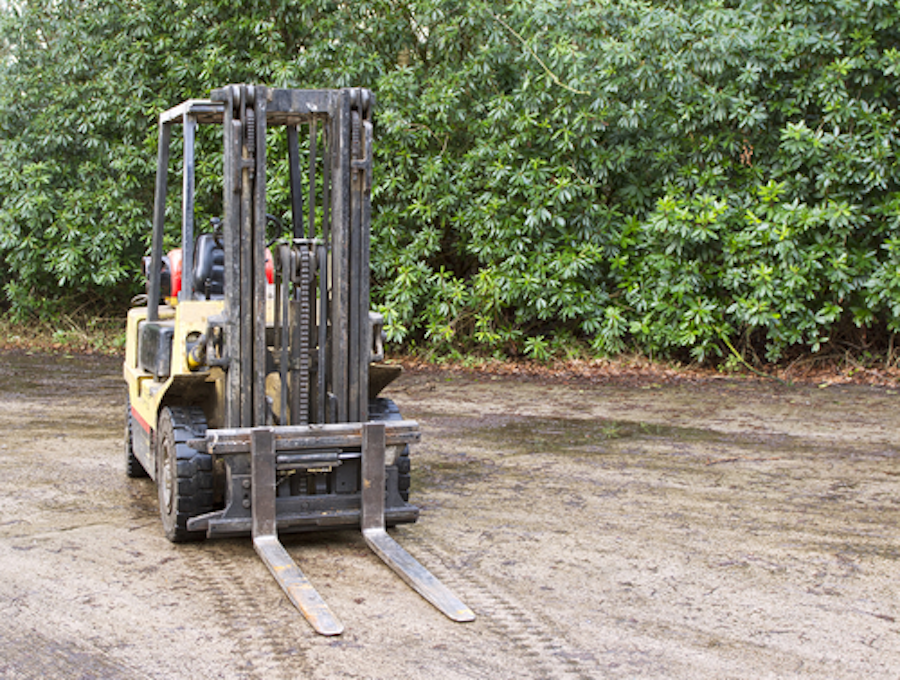News
Forklift Terminology Explained

Forklifts have many specialist terms. To help you in the purchase of your next purchase, we've provided a glossary of key terms that relate to forklifts.
Battery Capacity: Battery Capacity is measured with its ability to maintain power over a period of time with a specified consumption of energy, presented in Ampere hours (Ah). Common forklift voltages are 12, 24, 36, 48, 72 DC.
Capacity: The rating given to a lift truck indicating the amount of weight that a truck will lift to a predetermined fork height at a specified load centre. The most common is 24” load centre.Control Valves: A valve that controls the direction of flow of hydraulic fluid.Counter Weight: The weight installed by the manufacturer to give stability to the machine under load.
Counterbalance: A forklift truck that utilises weight in its chassis to counterbalance a load against the centre line of the drive wheels.
Data Tag: Typically a metal tag that is stamped by the manufacture showing MODEL and SERIAL NUMBER and pertinent data to further identify the unit.
Fork (Tynes): The cantilevered arms attached to the load carriage. They engage the load.
Fork Size: Dimensions of lift truck forks, expressed as: thickness x width x length.
Fork Spread: The maximum distance the forks can be positioned, expressed as width, measured from the outside edge of the forks.
Free Lift: The vertical distance the forks can be raised before a mast begins to telescope.
Hydraulic Pressure: Indicates the standard pressure of hydraulic fluid for a particular lift truck model, measured by pounds per square inch.
Lift Speed: The maximum upward speed forks can travel. This appears as two values, one for free lifting, the other the speed with a maximum load.
Load Capacity: The maximum weight a specified lift truck can lift and/or carry.
Load Centre: The horizontal distance between the front face and the longitudinal midpoint of an evenly distributed load.
Lower Speed: As lift speed, only going down.
Mast: The vertical support that permits raising and lowering the load.
Mast (Two/Triple/Quad Stage): A telescoping mast that is comprised of connecting masts: Limited Free Lift (FL) & Full Free Lift (FFL).
MFH: Maximum Fork Height. The maximum height of lift truck forks when the mast of the lift truck has reached full extension.
Narrow-Aisle Truck: A lift truck, which is designed specifically for narrow aisles. A narrow aisle is generally considered 7 to 9 feet wide.
Order/Stock Picker: A forklift with all controls for raise/lower and travel mounted on an operator's platform that raises and lowers with the forks.
Overall Height (Lowered/Raised): The height of a mast completely collapsed or fully raised.
Overall Width: Distance between the widest part of a lift truck. In the Guru, when referring to overall width for class 2 & 3 trucks, overall width refers to the width of the power unit, not the outriggers.
Overhead Guard: A framework above the operator's head attached to a lift truck to protect an operator. Sometimes known as a DOG (Driver's Overhead Guard).
Power Type: Refers to the mode of energy or motive force by which a lift truck is propelled - gasoline/LPG/diesel engine, electric.
Reach Truck: A truck equipped with a pantograph-type reach mechanism that allows the forks to extend out past the supporting outriggers.
Reach Extension: The maximum distance a fork carriage can be extended forward, horizontally.
Right Angle Stack: The ability to turn a lift truck 90 degrees in an aisle.
Stability Triangle: The area under the forklift within which the centre of gravity must remain to stay stable.
Subscribe
Keep up to date with PHL and all things forklift machinery.